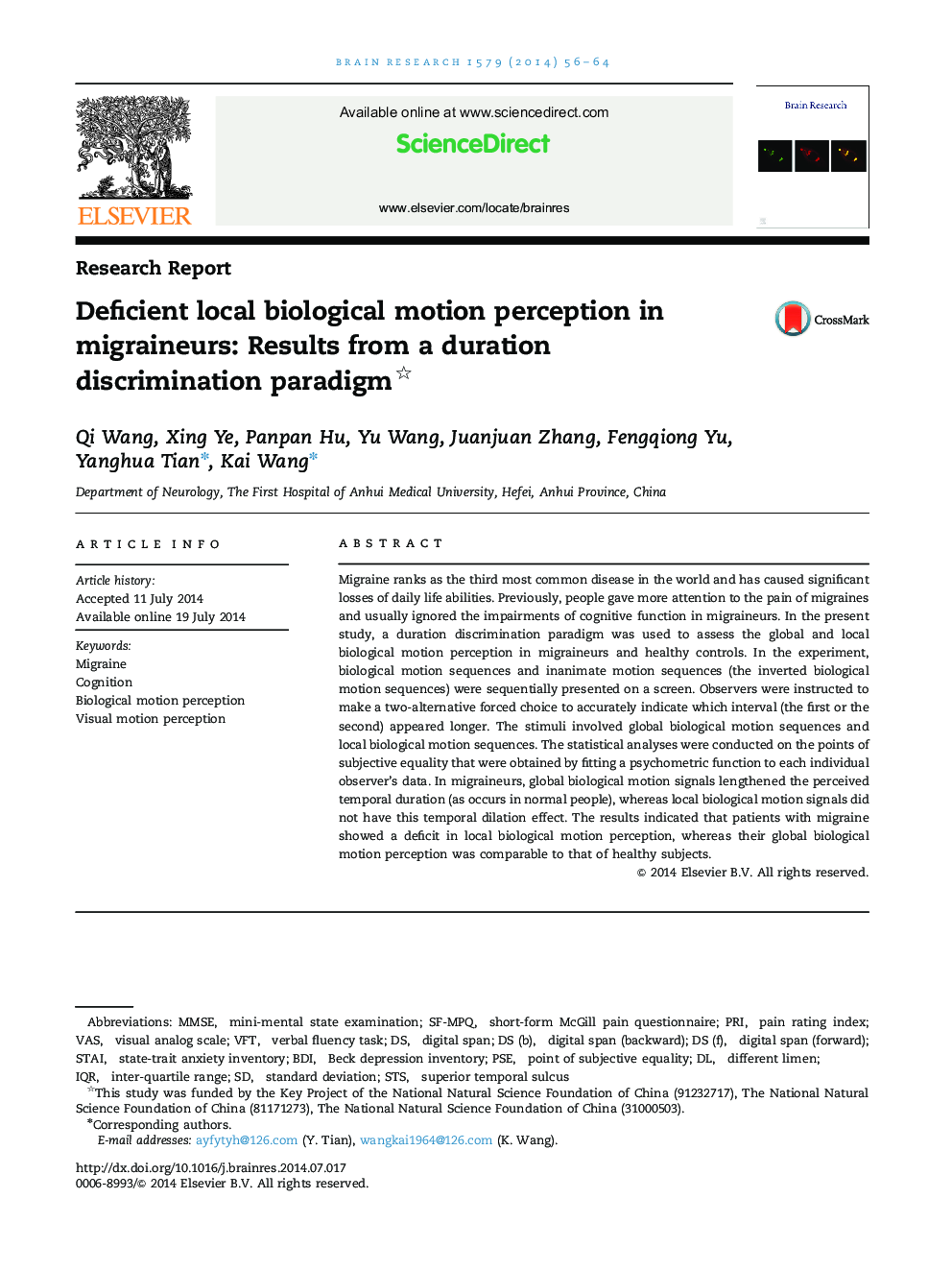| Article ID | Journal | Published Year | Pages | File Type |
|---|---|---|---|---|
| 4324187 | Brain Research | 2014 | 9 Pages |
•Thirty migraineurs were tested in a duration discrimination task.•Movements were performed with and without biological motion information.•The biological motion involved global biological motion and local biological motion.•Migraineurs showed a deficit in local biological motion perception.
Migraine ranks as the third most common disease in the world and has caused significant losses of daily life abilities. Previously, people gave more attention to the pain of migraines and usually ignored the impairments of cognitive function in migraineurs. In the present study, a duration discrimination paradigm was used to assess the global and local biological motion perception in migraineurs and healthy controls. In the experiment, biological motion sequences and inanimate motion sequences (the inverted biological motion sequences) were sequentially presented on a screen. Observers were instructed to make a two-alternative forced choice to accurately indicate which interval (the first or the second) appeared longer. The stimuli involved global biological motion sequences and local biological motion sequences. The statistical analyses were conducted on the points of subjective equality that were obtained by fitting a psychometric function to each individual observer’s data. In migraineurs, global biological motion signals lengthened the perceived temporal duration (as occurs in normal people), whereas local biological motion signals did not have this temporal dilation effect. The results indicated that patients with migraine showed a deficit in local biological motion perception, whereas their global biological motion perception was comparable to that of healthy subjects.
